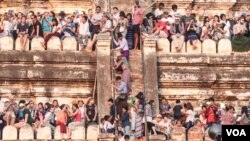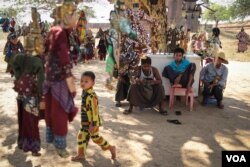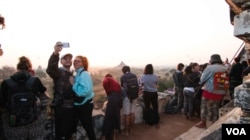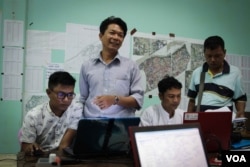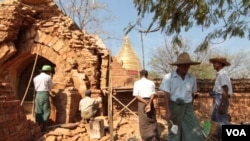The stairs are worn down by a millennia of use, but soon the footsteps on some of Myanmar’s most sacred temples may cease amid concerns about the damage done by increasing numbers of tourists.
The sprawling site of Bagan, home to well over 2,000 mostly Buddhist monuments that date back as far as 1057 AD, has become a major lure for travelers as Myanmar becomes an increasingly popular destination.
But as fears grow for the holy sites over the architectural - and cultural - impact of those in search of a good view, so too do calls to ban temple climbing altogether.
In search of something more
At 34-years-old, Charles de Valois quit his job in digital marketing and set off traveling through Southeast Asia in search of something more.
Valois told VOA that Myanmar had been a particularly appealing prospect - somewhere he’d heard good things about from friends.
“It’s a country we talk about because of the politics,” he explained from his hostel, one of many that now line the streets surrounding Bagan. “It changes a lot, and I was curious to see that before it totally changes, before it’s [made] rotten by tourism.”
When it came to the core appeal of this ancient site, Valois is succinct. For him, as for many of the 250,000 tourists who visited in 2015, it “really is all about the sunrise and sunset.”
WATCH: John's video report
It is the search for the most stunning view of this panorama that has led tourists to climb up the temples themselves - and led the authorities to the brink of a ban.
Rapid growth
Since political reforms started in 2011 and culminated in the country’s first openly contested election in November 2015, Myanmar’s transition from military dictatorship has meant a country once deemed off limits for many foreigners is now a viable holiday spot.
Figures from the Ministry of Hotels and Tourism show tourist arrivals in 2015 reached 4.68 million, compared to 800,000 in 2010.
A tour guide for nearly three decades, Zaw Win Cho recalls learning his trade as a child showing the smattering of tourists who headed to the site back in the 70s.
“When we were young, we had only three hotels run by government... not many tour guides at the time - not more than 10 in the whole town - and not more than five taxis.
“Nowadays we have about 250 tour guides, about 300 taxis and 100 hotels.”
Not that he is too wistful. Like many others he has earned a living from the tourism industry in a part of Myanmar known as the ‘dry region’, where national poverty levels of around 26 percent are exacerbated by poor agricultural prospects.
But in the case of Bagan, tourism growth comes at a price, and calls for a ban on some activities are coming from two different sources.
Growing concerns
Than Zaw Oo is leading the Ministry of Culture’s ongoing efforts to secure Bagan UNESCO world heritage status.
“Right now, to climb up monasteries [is something] we dislike because of overloading” he said. “We need to be protecting [them] because all these monuments [date back] more than 1000 years and so are very fragile.”
Last February the ministry of culture closed access to the five temples that could be climbed, only to reverse the decision shortly afterwards.
However, concern has been escalated amid ongoing restoration work following the impact of a 6.8 magnitude earthquake last October, which damaged 389 monuments, 89 of which were badly affected.
It is not just archaeologists concerned.
Bagan is a site of profound religious importance in Myanmar, where nearly 90 percent of the population practices Buddhism.
While in Bagan, VOA spotted at least one temple where ‘do not climb’ signs were being ignored, but it is the breaking of cultural rules that is generating a more immediate response - acts termed “culturally disgraceful” by the authorities during last year’s short-lived ban.
Posters up on the walls of hostels asking guests not to wear shoes, party or drink alcohol on the temples are testimony to the fact that not all are respectful of these rules.
“There are some cases of tourist not knowing or understanding that they aren’t supposed to climb or wear footwear in some restricted places,” explains Nyaung-U district administrator Soe Tint, who is supportive of a ban. “We sometimes, more or less, feel like our beliefs are being imposed upon.”
A balancing act
Like many others mulling a ban, Soe Tint is all too aware of the dangers of scaring off tourists.
“We are trying to balance things out and trying to make this accessible for everyone,” he said, adding the hope is to move people to alternative spots, including existing and newly built viewing hillocks.
Though Soe Tint claimed the idea had strong local and national support, views are far from unanimous on the matter. Tour guide Zaw Win Cho, for example, thinks allowing tourists to climb up more temples will help spread the load.
Reaching the end of his time in Bagan, de Valois is conflicted about climbing temples. Taken aback by the beauty of the sights he has seen atop them, he nonetheless had to suppress a guilty feeling.
“I think it’s important when you travel to respect the country you’re in, and I have the feeling when climbing on the temple that perhaps it’s a bit wrong,” he said.
“Selfishly,” he added, “I’m happy it’s still authorized.”




